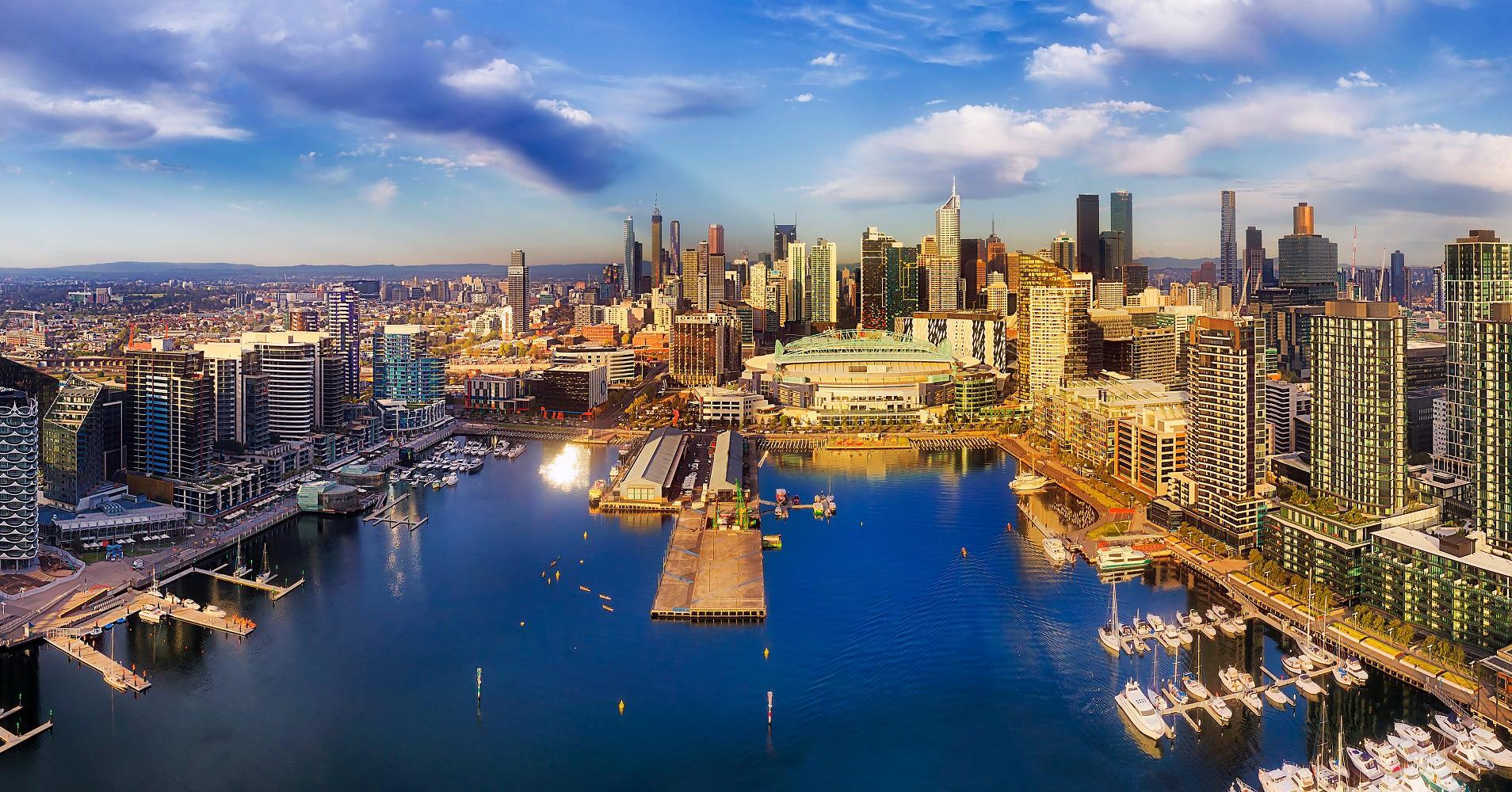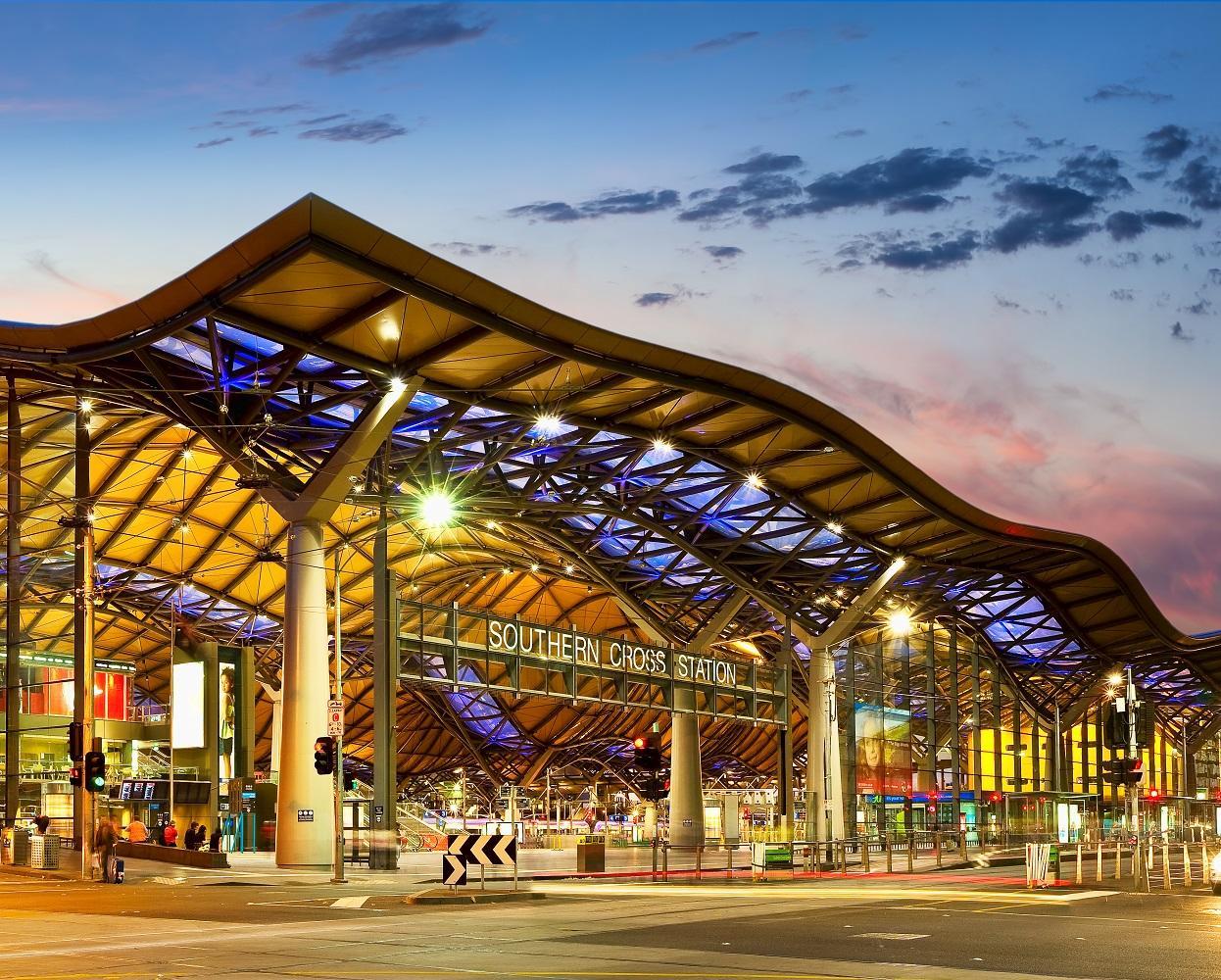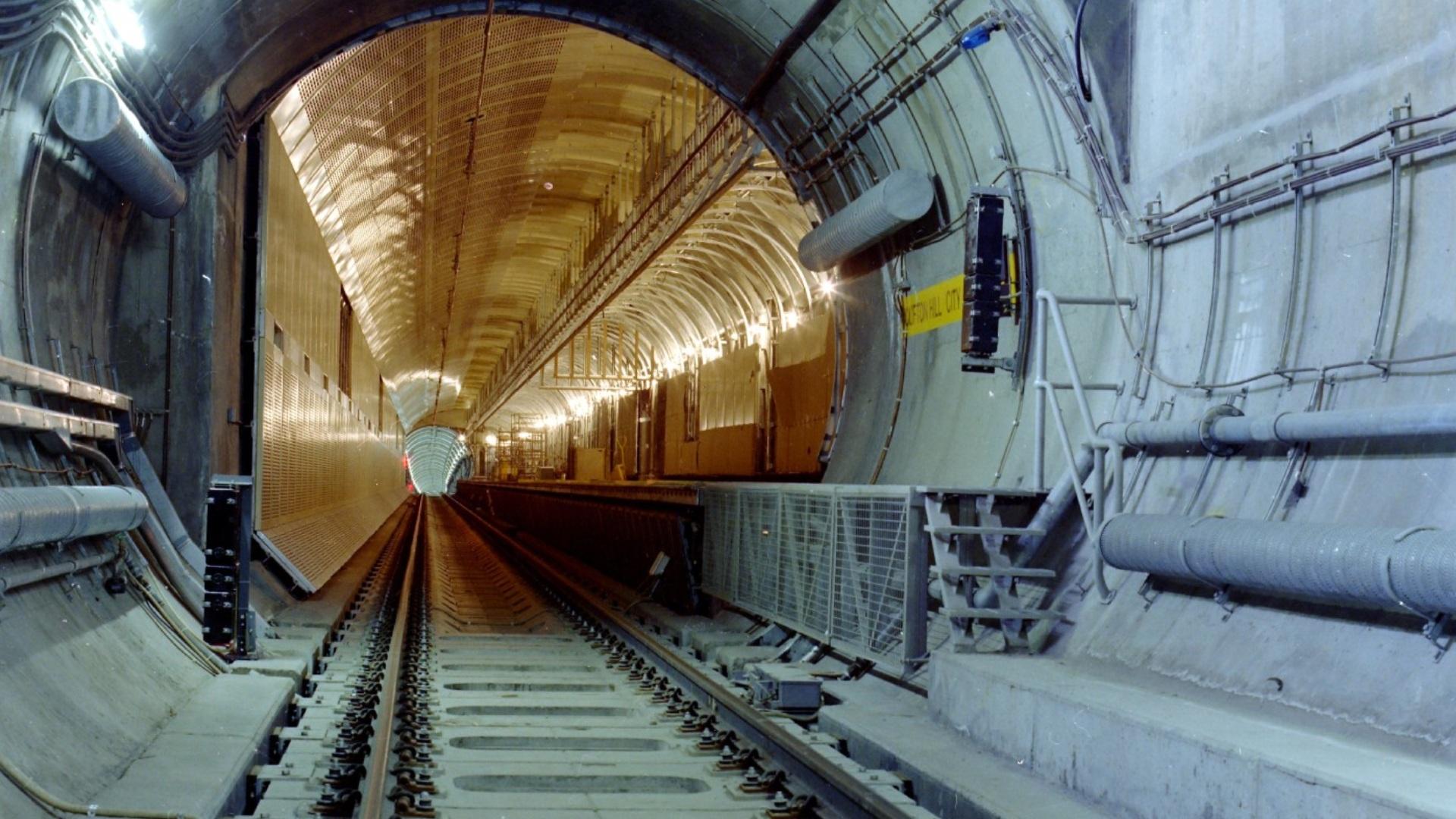Melbourne Underground

Known by Melburnians as the City Loop, the project significantly improved the capacity of the city’s commuter rail system to handle growing passenger traffic between the Central Business District (CBD) and the suburbs. By easing congestion at the city’s two train stations, it encouraged people to leave their cars at home and take the train to work in the bustling city.
The Melbourne City Loop project
The Melbourne Underground Rail Loop (MURL) was the flagship project of Victoria Premier Henry Bolte’s government’s infrastructure vision, presented in the “1969 Melbourne Transportation Plan", a comprehensive blueprint for road and rail development in the city. The MURL would consist of an underground loop system. Three new underground stations and a new two-track viaduct would join the city’s two existing aboveground stations - Flinders and Spencer – to form a loop around the CBD. Trains arriving from the suburbs would enter the loop and then exit from one of the four tunnels that circled the CBD on the east and north sides. The viaduct, meanwhile, connected Flinders and Spencer on the south and west side of the loop. The challenge was to excavate two single-track tunnels on top of the other two tunnels in a densely populated area and cause minimum disruption to street activity. Each tunnel would be dedicated to a certain number of rail lines and be independent of the other tunnels. Construction began in 1971. The viaduct between Flinders and Spencer opened in December 1978. The four tunnels were progressively put into service between January 1981 and April 1985.

Our ability to innovate can help Melbourne meet its future transportation needs and will ensure the best possible outcomes for Victorians by increasing productivity
The benefits of the project
The City Loop helped ease congestion on the commuter rail lines leading into the CBD, especially at Flinders Station where some trains had to reverse direction after arriving at their destination. By encouraging commuters to leave their cars at home and take the train to work, it contributed to a reduction in traffic congestion on the roads. The City Loop also provided access to the northern parts of the city, encouraging residential and commercial development. Easier access to the CBD contributed to a growing dynamism, with more jobs, shopping, and entertainment on offer.
The Melbourne Underground Rail Loop project’s details
The City Loop consists of a 722-metre-long two-track viaduct on the southern and western ends of the Central Business District, and four single-track tunnels running for a total of 13 kilometres underground along the eastern and northern ends between Spring and LaTrobe streets. Of the total, 10 kilometres were done by mechanised excavation, and the remaining three kilometres by cut and cover. The external diametre of the tunnels is seven metres. The Museum Station, which came to be known as Melbourne Central, has five levels, going 29 metres deep. Flagstaff has four levels, with a maximum depth of 32 metres. All stations, including the third called Parliament, have two platforms, one above the other. That enabled each one to accommodate four trains simultaneously.
A significant portion of the excavation and lining of the tunnels – 11 kilometres - was done by Webuild predecessor, Cogefar S.p.A., with partner Codelfa. It includes the tunnels between Parliament and Museum stations; Museum and Flagstaff stations; and Flagstaff and Spencer Street Yards. Cogefar and Codelfa also built the Museum and Flagstaff stations, and set down the reinforced concrete sleepers and tracks throughout the City Loop.

Key facts
Webuild’s predecessor Cogefar was instrumental in the construction of four major segments of MURL
+ + +
length of new tunnels (out of a toal 13)
+ + +
underground stations
+ + +
five stations of the circuit, three of which are underground stations
Melbourne New Underground Rail Loop: Innovation and Technologies
The project set a number of civil engineering firsts in Australia, being at the forefront of technological development.
It witnessed the first use of a road-header for excavation in the field of civil engineering construction. It avoided the risk posed by the alternative - underground blasting – which could disturb the integrity of the rock and creating excessive noise and vibrations, as well as damage to historic buildings at street level.
There was the first use of shaft raise-boring for a large civil engineering project. There was the first systematic use of shotcrete for ground control at the cutting head of a tunnel-boring machine.
Then there was the earliest known application of several New Austrian Tunnelling Method techniques, using rockbolts and shotcrete to support the tunnel walls.
At the Museum Station, a committee submitted recommendations to improve its design after having studied railway accidents that had occurred overseas. It constantly reviewed the designs and operating procedures, looking out for any potential risks or hazards.
Construction proceeded while existing rail lines remained in operation. Disturbance to street life was kept to a minimum. At the end of the project, no significant surface settlement had been recorded, no proven claims of damage to buildings were received, and public complaints about noise and ground vibrations had been minimal during all the years of construction.
Museum Station, Melbourne Underground Rail Loop, Australia | Webuild